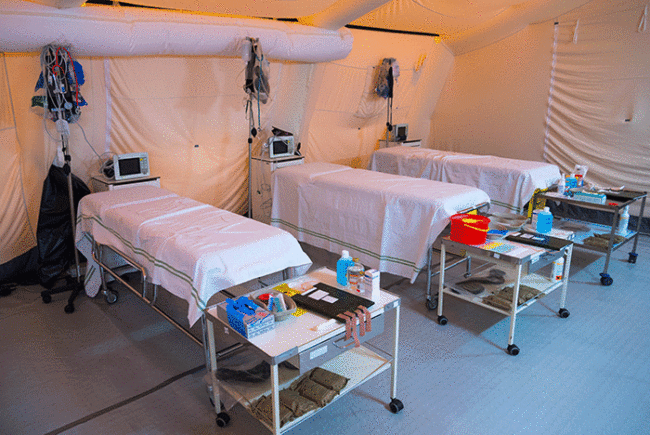The COVID-19 pandemic has impacted facilities as we adapt the physical environment to meet changing needs. Temporary physical changes may include installing temporary barriers, creating temporary screening locations, repurposing spaces, using temporary structures and more. Often, these changes create situations that are not in strict compliance with NFPA 101®, Life Safety Code®.
The potential for the spread of the coronavirus within a health care facility is much greater than the chance of an injury in a fire. Nevertheless, a risk assessment should be conducted when making temporary changes.
Organizations should already have in place a process to assess the need for and implement Alternative Life Safety Measures (ALSM) or, in Joint Commission-accredited facilities, Interim Life Safety Measures (ILSM). Use the life safety risk assessment and mitigation process already in place, as physical changes are anticipated in response to the pandemic. Life safety risks are not the only risks that must be assessed. Clinical needs, infection prevention, safety, security and others must be considered and assessed by a multidisciplinary team.
If you have an ALSM or ILSM risk-assessment process already in place, use that as the foundation. An example of a risk-assessment process includes:
- Identify each temporary physical change for pandemic response that creates a potential life safety risk or noncompliance with the Life Safety Code.
- Determine the level of risk, taking into account overarching building safety features already in place, such as a fully functional sprinkler system or fire alarm system.
- Determine needed mitigation measures to offset the risk. Consider the impact that measures have on infection prevention, security, clinical functions and other risks.
- Implement mitigation measures.
- Monitor to assure that mitigation measures are maintained and effective.
- Document the risk-assessment process, mitigation measures implemented and monitor results.
- Reassess risk and mitigation measures as physical conditions change throughout pandemic response.
Timothy E. Adams FASHE, CHFM, CHC, CLSS-HC, program director for system environment of care and life safety, IU Health.





